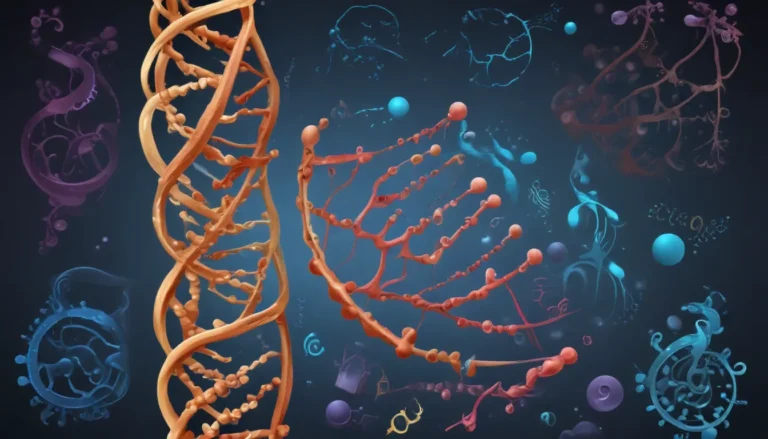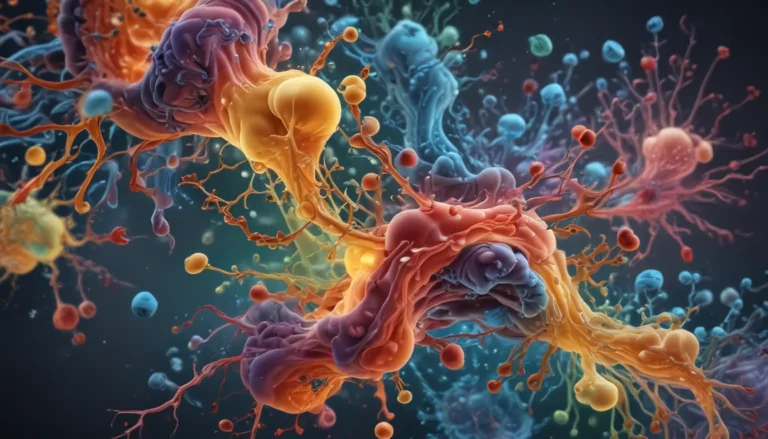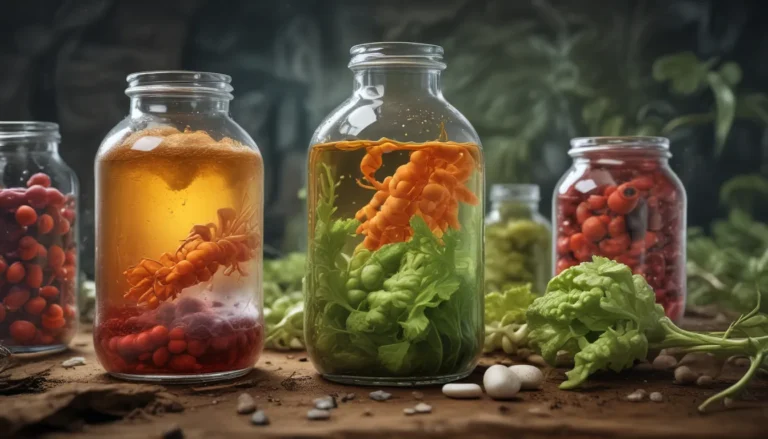A Note About Images: The images used in our articles are for illustration purposes only and may not exactly match the content. They are meant to engage readers, but the text should be relied upon for accurate information.
Are you fascinated by the complexities of genetics and the wonders of biological inheritance? If so, codominance is a concept that will surely capture your attention. From the unique traits it creates to its role in promoting genetic diversity, codominance is a crucial piece of the genetic puzzle. In this article, we will delve into 12 fascinating facts about codominance, shedding light on its significance, real-world examples, and how it shapes the diversity of life forms. Whether you are a student studying genetics or simply curious about the intricacies of biology, these facts will provide you with valuable insights into this captivating concept. So, let’s embark on a journey to unravel the mysteries of codominance!
Key Takeaways:
- Codominance allows for the expression of two different alleles, creating unique traits in organisms and promoting genetic diversity for better survival and adaptation.
- Understanding codominance helps scientists study inheritance patterns and genetic diversity, leading to intricate genetic mapping and the identification of disease genes.
Codominance: A Fundamental Form of Inheritance
Codominance is a genetic concept that describes the expression of two different alleles in a heterozygous individual, where both alleles are fully expressed. Unlike simple dominance, where one allele masks the expression of the other, codominance allows both alleles to be visible, resulting in a unique phenotype that showcases attributes of both alleles.
The Presence of Both Traits Simultaneously
In codominance, the traits associated with both alleles are visible simultaneously in the phenotype of an organism. This simultaneous expression creates distinctive and striking characteristics that highlight the intricate interplay of multiple alleles in shaping an individual’s traits.
Enhancing Genetic Diversity Through Codominance
By allowing the expression of multiple alleles, codominance promotes genetic variation within populations. This diversity increases the chances of survival and adaptation to changing environments, as different combinations of traits can provide advantages in various situations. Codominance serves as a mechanism for enhancing genetic diversity and ensuring the resilience of species in the face of environmental challenges.
Real-Life Examples of Codominance
Classic Example: ABO Blood Group System
The ABO blood group system is one of the most well-known examples of codominance in humans. This system involves three alleles: A, B, and O. When an individual has both the A and B alleles, they will express both A and B antigens on their red blood cells, resulting in the AB blood type. This clear demonstration of codominance highlights how multiple alleles can coexist and be expressed simultaneously, leading to unique blood types.
Coat Colors in Animals
Codominance can also be observed in determining coat colors in animals. For example, in horses, the Roan coat color is a result of codominance between the white and red alleles, giving the horse a visually striking speckled appearance. This example showcases how codominance can create visually captivating characteristics in animals through the simultaneous expression of different alleles.
Plant Species: Snapdragons
Codominance is not limited to animals and can also be observed in certain plant species. In snapdragons, flower color inheritance demonstrates codominance. When a red-flowered snapdragon and a white-flowered snapdragon are crossed, the offspring exhibit both red and white petals, showcasing the coexistence of different alleles in determining flower color. This example underscores the versatility of codominance across various organisms and highlights its role in creating diverse phenotypes.
Distinction from Incomplete Dominance
It is important to note that codominance differs from incomplete dominance, another form of allele interaction. In codominance, both alleles are fully expressed, leading to the simultaneous presentation of traits associated with each allele. On the other hand, incomplete dominance results in an intermediate phenotype when two different alleles are present, with the traits blending together rather than being expressed simultaneously. Understanding the distinction between these two concepts is crucial for comprehending the nuances of genetic inheritance patterns.
Role in Hereditary Diseases
Codominance plays a significant role in the inheritance of genetic disorders. Many hereditary diseases, such as sickle cell anemia, are inherited through codominant alleles. In sickle cell anemia, individuals carrying both the normal hemoglobin allele and the sickle allele will exhibit symptoms associated with the disease. This example underscores how codominance can contribute to the manifestation of genetic disorders and highlights its implications in the field of medical genetics.
Observations in Human Traits
Human Eye Color
Human eye color is determined by multiple alleles that exhibit codominance. For instance, a person with one blue-eyed parent and one brown-eyed parent may inherit both blue and brown pigmentation in their eyes, resulting in a unique eye color that reflects the coexistence of different alleles. This real-life example demonstrates how codominance influences human traits and contributes to the diversity of characteristics observed in populations.
Significance in Genetics
Codominance is a fundamental concept in genetics that is essential for understanding the complexities of inheritance patterns and genetic diversity. By studying codominance, scientists and geneticists can predict the inheritance and expression of traits in various organisms, leading to advancements in genetic research and breeding strategies. Codominance serves as a cornerstone in genetic studies, providing valuable insights into the mechanisms of allele interaction and trait expression in living organisms.
Facilitating Genetic Mapping
One of the key advantages of codominance is its role in facilitating intricate genetic mapping. By studying the codominant expression of specific traits, scientists can create detailed genetic maps that pinpoint the precise location of genes on chromosomes. This mapping is crucial in identifying the genetic basis of various diseases and traits, enabling researchers to unravel the genetic components underlying complex characteristics in organisms. Codominance serves as a valuable tool in genetic research, paving the way for breakthroughs in understanding genetic mechanisms and traits.
In conclusion, codominance is a captivating genetic concept that showcases the complexity and diversity of inheritance patterns in living organisms. By allowing for the expression of both alleles simultaneously, codominance creates a tapestry of traits that reflects the intricate interplay of genetic factors. From blood types to coat colors, codominance influences a wide range of characteristics in diverse species, underscoring its significance in shaping the genetic landscape of life on Earth. As we continue to unravel the mysteries of genetics, codominance stands as a testament to the intricate nature of genetic inheritance and the fascinating variations that emerge from allele interactions.
FAQs
What is codominance?
Codominance is a genetic concept wherein both alleles of a gene are fully expressed, resulting in a phenotype that displays attributes of both alleles simultaneously.
How does codominance differ from incomplete dominance?
In codominance, both alleles are expressed fully and equally, resulting in a distinct phenotype that displays characteristics of both alleles. In contrast, incomplete dominance occurs when the heterozygous phenotype is a blend of the two alleles, displaying an intermediate phenotype.
Can multiple alleles participate in codominance?
Yes, codominance can involve multiple alleles. This means that more than two alleles present in a gene pool can be expressed simultaneously and independently of each other.
Are there any real-life examples of codominance?
Yes, one well-known example of codominance is the ABO blood type system in humans. The A and B alleles are codominant, meaning individuals with both A and B alleles will express both A and B antigens on their red blood cells, resulting in the AB blood type.
Can codominance occur in plants and animals other than humans?
Yes, codominance is observed in many species, including plants and animals. It plays a significant role in determining the color variations of flowers, coat patterns in animals, and the expression of various traits in agricultural crops.
As we uncover the intricacies of genetics and the remarkable diversity of life forms, codominance stands as a captivating example of genetic interaction and trait expression. By exploring the nuances of codominance, we gain a deeper appreciation for the intricate tapestry of genes that shape the characteristics of individuals and populations. So, the next time you encounter codominance in your studies or research, remember the fascinating insights it offers into the complexities of genetic inheritance and the vibrant variations that define life on Earth.






